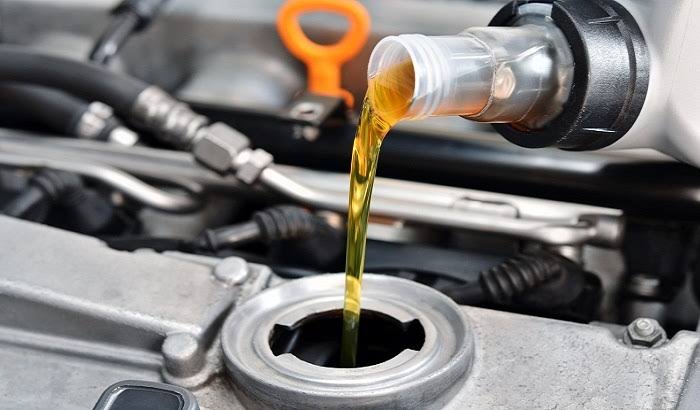Maintaining a vehicle’s optimal performance is a responsibility that every car owner takes seriously. One of the most crucial aspects of automotive upkeep is the use of quality lubricants. From ensuring smooth engine operation to prolonging component life, lubricants play a vital role in a car’s longevity. In this article, we will explore five essential types of lubricants that every car owner should be familiar with, along with their distinct uses and benefits.
- Engine Oil
Engine oil is arguably the most important lubricant in a car. It serves multiple purposes: reducing friction between moving parts, carrying away heat, and preventing corrosion. There are primarily two types of engine oils: conventional and synthetic.
– Conventional Oil: Made from crude oil, this type of lubricant is good for most standard vehicles and driving conditions. It’s generally less expensive. However, it may require more frequent changes than synthetic oil.
– Synthetic Oil: This is artificially made and tailored to provide superior protection at extreme temperatures and conditions. Synthetic oils tend to have better oxidation stability and are more effective in reducing engine wear and tear.
Choosing the right engine oil for your vehicle is important. Always refer to your owner’s manual for the manufacturer’s recommendations on viscosity and oil type. Regularly changing your engine oil will not only enhance performance but also extend your engine’s life.
- Transmission Fluid
Transmission fluid serves a crucial function in the operation of a vehicle’s transmission system. It lubricates the components inside the transmission, which helps in smooth gear shifting. Moreover, it acts as a coolant and cleaning agent, preventing sludge build-up.
– Automatic Transmission Fluid (ATF): This type of fluid is specifically formulated for automatic transmissions and comes with additives that assist in facilitating smooth and efficient gear changes.
– Manual Transmission Fluid: Typically thicker than ATF, this fluid provides lubrication and cooling for manual transmissions yet requires less frequent changes compared to automatic counterparts.
Transmissions are complex systems, and using the wrong type of transmission fluid can lead to poor performance or even complete failure. Vehicle owners should regularly check their transmission fluid levels and change the fluid as recommended by the manufacturer.
- Grease
Grease is another essential lubricant, primarily used for various mechanical parts where oil wouldn’t be effective. Unlike oil, grease stays put, making it perfect for high-load applications, such as wheel bearings, chassis components, and universal joints.
– Lithium Grease: The most common type of grease, known for its ability to withstand high temperatures and resist moisture. It is versatile and used in a range of automotive applications.
– Moly Grease: This is a heavy-duty grease that contains molybdenum disulfide (MoS2), providing excellent lubrication under high pressure or extreme conditions.
Using grease appropriately can help in preventing wear and tear, especially in components that experience friction. Regular maintenance of greased parts is essential to ensure long-lasting and reliable vehicle operation.
- Brake Fluid
While often overlooked, brake fluid is vital for the safe operation of a vehicle. It transfers force from the brake pedal to the braking mechanism at the wheels, enabling the vehicle to stop effectively.
There are two main types of brake fluids:
– DOT 3 & DOT 4 Brake Fluids: These are glycol-based fluids commonly used in most vehicles. They absorb moisture over time, which can lead to reduced performance and potential brake failure. Regularly replacing these fluids is crucial to maintain braking efficiency.
– DOT 5 Brake Fluid: Unlike glycol-based fluids, DOT 5 is silicone-based and classified as non-hygroscopic, meaning it doesn’t absorb moisture. However, it shouldn’t be mixed with other types of brake fluids.
Routine checks and replacements of brake fluid are critical for maintaining safe braking performance, particularly as it degrades over time and may absorb moisture from the air.
- Power Steering Fluid
Power steering fluid plays a decisive role in modern vehicles equipped with power steering systems. It helps provide the necessary hydraulic pressure to assist in the steering process, making it easier to maneuver your vehicle.
– Conventional Power Steering Fluid: This is generally a clear or amber fluid. It is refined and enriched with additives to maintain its viscosity and functionality.
– Automatic Transmission Fluid (ATF): In some vehicles, ATF is used as power steering fluid. However, using the wrong fluid can lead to steering issues and potential damage, so it’s vital to check both your owner’s manual and the fluid type in your vehicle.
Regularly monitoring your power steering fluid is key to ensuring that your steering system operates smoothly and efficiently. Low fluid levels can lead to increased wear on steering components and can make it harder to control your vehicle.
Conclusion
In conclusion, understanding the different types of lubricants is essential for every car owner. Each lubricant serves a unique role, and using the right type for each specific part of your vehicle can significantly impact performance and longevity. From the engine oil that keeps internal parts moving smoothly to transmission fluid that ensures effective gear shifts, using quality lubricants is non-negotiable.
Taking these factors into consideration can help maintain your vehicle in prime condition. As you become better acquainted with these five essential lubricants, you will be better equipped to make informed decisions about your vehicle’s maintenance.
*Experience premium engine care—visit any 11PLC filling station nationwide today for the best Mobil Lubricants. Your vehicle deserves nothing less!*

